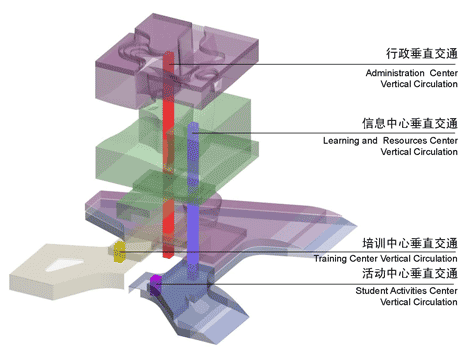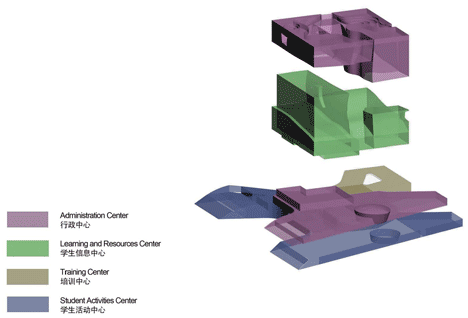Aedas creates cavernous hollow inside Xi'an Jiaotong-Liverpool University building
Curvy holes puncture the walls of this university building completed by architecture firm Aedas in Suzhou, China, with courtyards, terraces and balconies designed to encourage interaction between staff and students (+ slideshow).
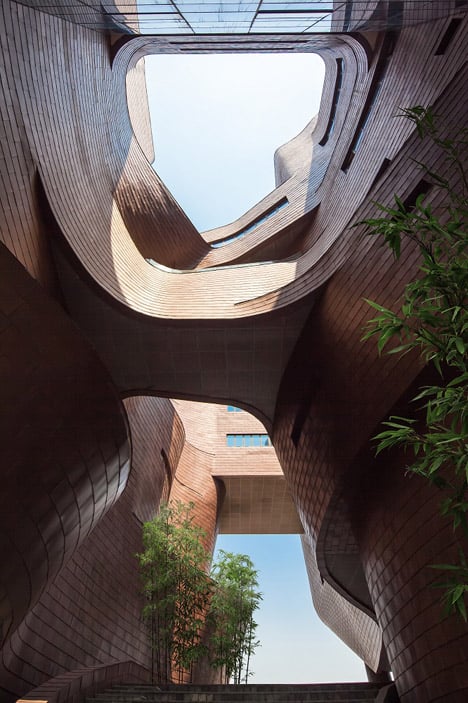
Aedas designed the administration building for Xi'an Jiaotong-Liverpool University – an eight-year-old institution that is split between China and the UK.
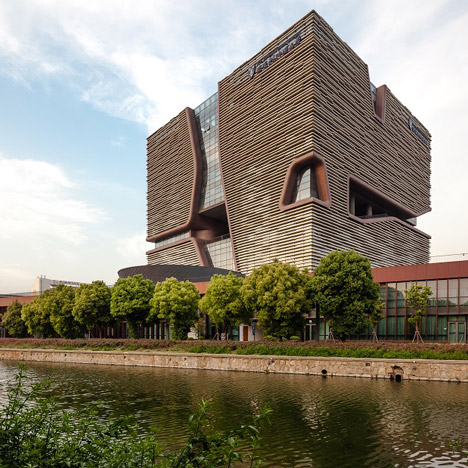
The 61-metre-tall building features a multi-layered facade, with some glazing sitting within large recesses, while other sections project forward from behind uneven horizontal louvres made from perforated aluminium and encased within smoothy curved frames of zinc panelling.
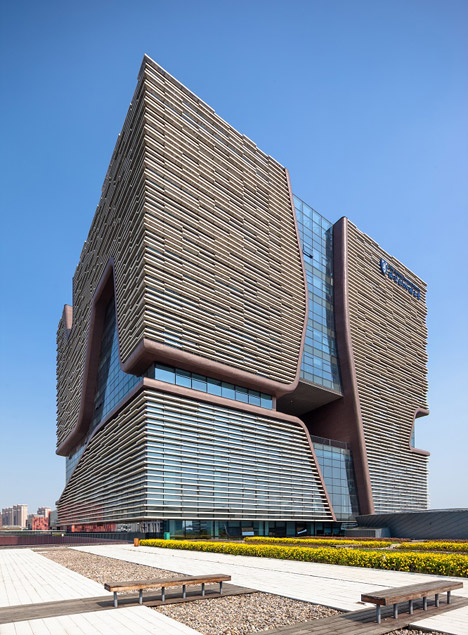
The architects claim these forms were inspired by scholar's stones – a kind of naturally occurring limestone rock that has been revered by Chinese scholars for centuries, and often features large holes.
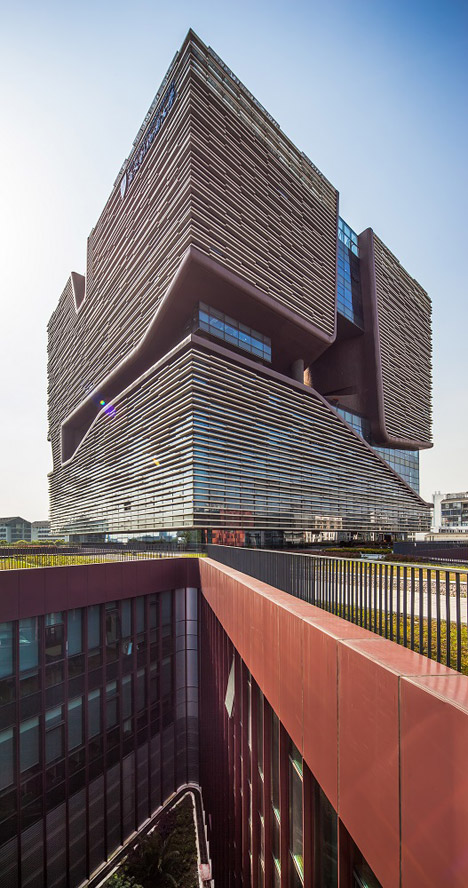
"The porous nature of the stones is transformed into a void structure with functional spaces linking up different programmes within the building," said Aedas in a statement.
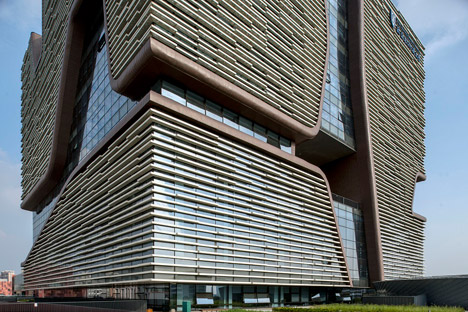
The building contains 14 storeys, including one below ground level. These accommodate an administration department, a training centre, a learning resources facility and a student activities centre.

The various balconies and terraces open out to a large hollow at the centre of the structure, creating what the architects describe as a "three-dimensional Suzhou garden". This opening allows natural light and ventilation to permeate the interior.

The building also features a green roof, where the architects have added a final terrace and garden.
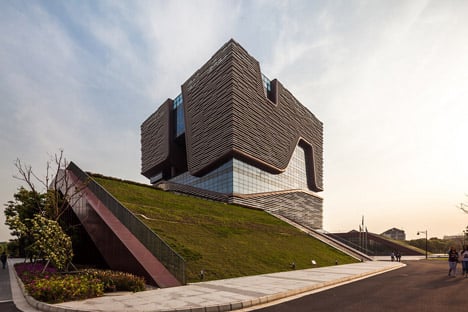
Read on for a project description from Aedas:
Aedas turns the scholar's stone into a university building
Located in Suzhou Industrial Park, the Xi'an Jiaotong–Liverpool University occupies a beautiful environment where there is a harmonious coexistence of the city's rich cultural traditions and its rapid economic development. Aedas' design for its Administration Information Building was inspired by the famous Taihu stone unearthed around the Suzhou city.
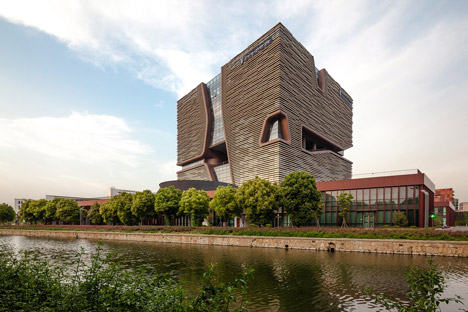
Taihu stones are sometimes referred as scholar's stones, as they are much appreciated by Chinese scholars. They are a kind of limestone exposed to long-term wave erosion, resulting in pores and holes all over the stone. Peculiar and precipitous in appearance, the stones are of high ornamental value and have been a garden designers' favourite since the ancient time.

The porous nature of the stones is transformed into a void structure with functional spaces linking up different programmes within the building, including an administration centre, a learning and resources centre, a training centre and a student activities centre. The voids also allow the building to respond to the users and surrounding context and turn it into a vessel for interaction. The different heights of voids create a three-dimensional Suzhou garden within the building, and provide rooms for sustainable features such as the introduction of natural daylight and ventilation.

Xi'an Jiaotong–Liverpool University is a new international university jointly founded by Xi'an Jiaotong University China and the University of Liverpool UK as a joint venture. The Administration Information Building recently topped other category winners and won the Grand Prize at South China Morning Post Chivas 18 Architecture and Design Awards 2014. It also received a Platinum award under Architecture, Building and Structure Design at A' Design Awards 2013 – 2014 and was shortlisted in the World Architecture News Commercial Awards 2013.
For job opportunities at Aedas, visit their company profile on Dezeen Jobs.
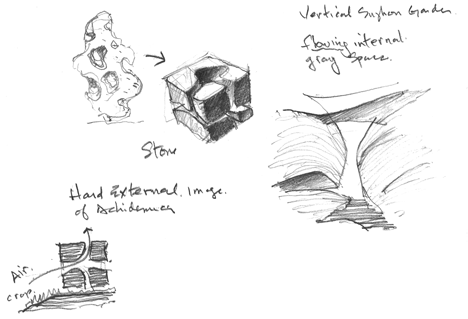
Project: Xi'an Jiaotong–Liverpool University Administration Information Building
Location: Suzhou, China
Architect: Aedas
Client: Suzhou Industrial Park Education Investment Development Co. Ltd.
Gross area: 59,893 square metres
